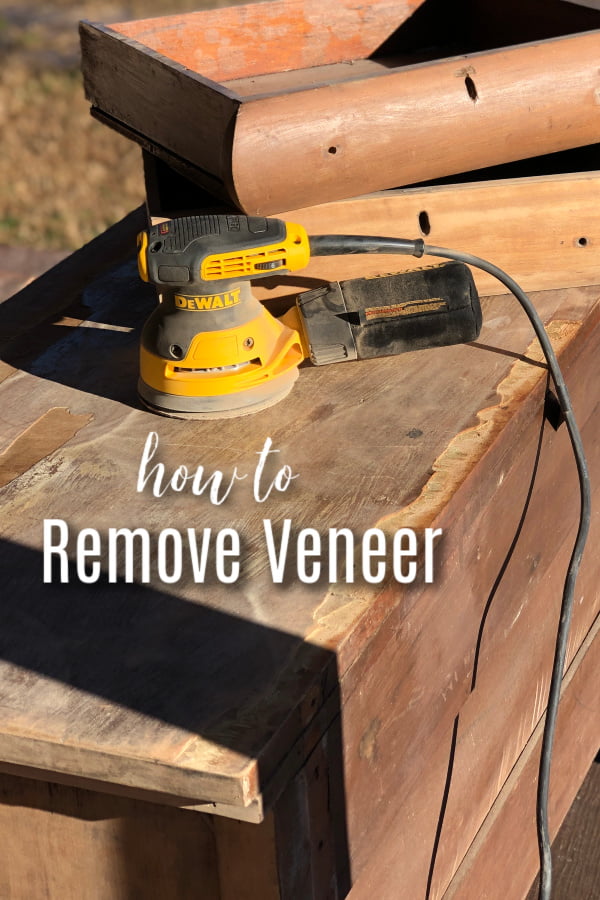
Veneer damage is every furniture painter’s nightmare. Learning how to remove veneer the easy way wasn’t easy at all. It took years to figure out that every piece was not made the same and because they were different, it took other methods to repair them. Today I would like to share a few ways that I use to remove that pesky stuff.
Estimated reading time: 5 minutes
This post contains a few affiliate links to help you find the products I use. You are not charged extra to use any of the links, but any income I make will be used for more fun projects! To see my full disclaimer, click here.
How to Remove Veneer The Easy Way
The biggest challenge of removing the veneer is the glue that binds it to the wood. The older the piece, the easier it is to remove. But then again, some furniture manufacturers, I swear, must use elephant glue.
Tools Needed To Remove Veneer
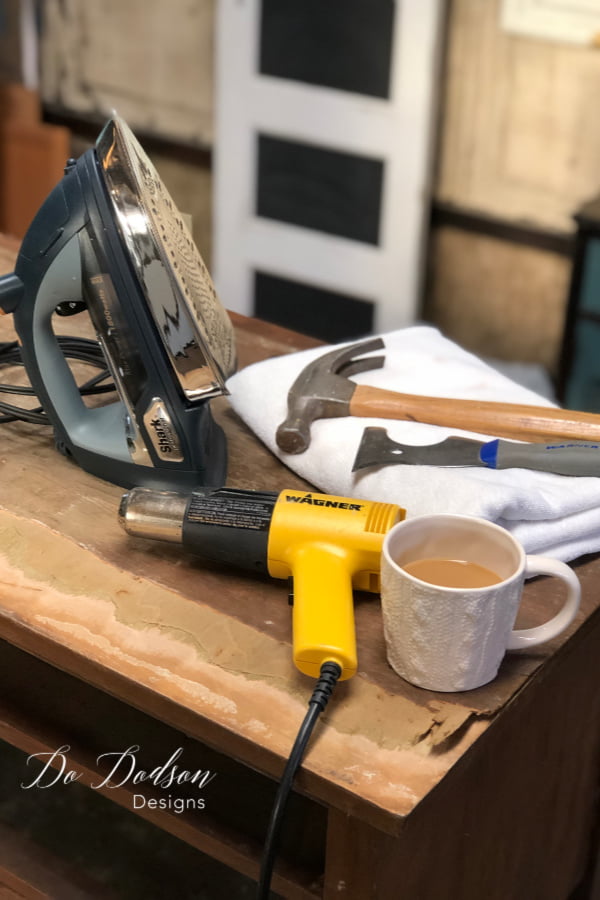
The first thing you will need is COFFEE and a lot of it! Just kidding, of course, but you will need your strength. You can expect your arms to be sore, as well as a few blisters on your hands if you don’t use gloves. I had to learn the hard way.
Method #1 Using A Paint Scraper
I always start off lifting the veneer at the corners, especially on the tops. This will be the most likely area to raise first because of exposure to rubbing, air, and moisture. There have been times that a paint scraper was all that I needed to remove the veneer. It’s a rare occurrence, but it does happen.
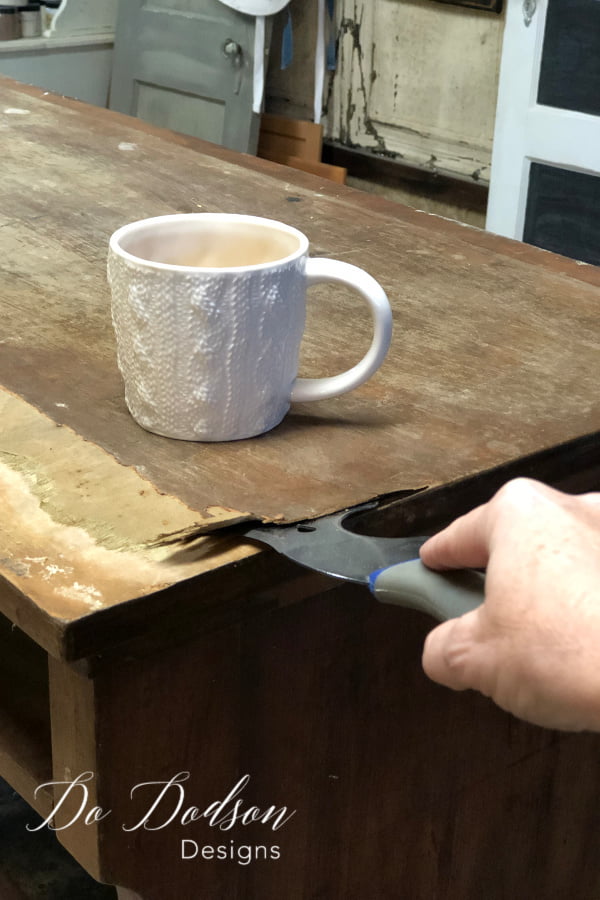
Method #2 How To Remove Veneer With Heat
Sometimes it’s necessary to get more aggressive. I have found that extreme heat will cause the glue to melt and make it easier to remove the veneer. I use a heat gun while prying the wood veneer up with the paint scraper at the same time.
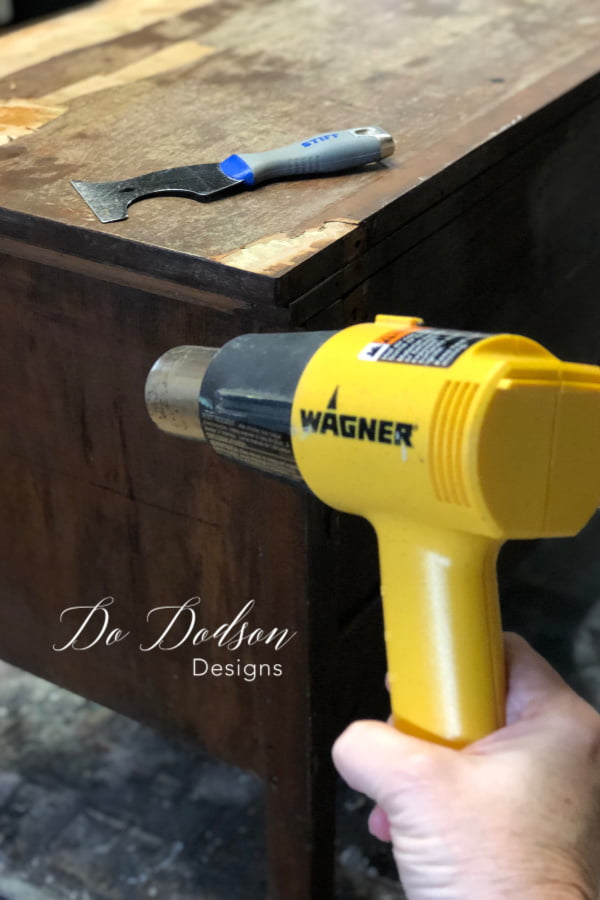
Method #3 The Wet Towel Method
If the other methods fail, I use the wet towel method by placing a wet (saturated) towel on top of the veneer and leaving it overnight. The glue will start to break down because most adhesives used back in the day were water-based. Also, try using steam from an iron (find one at Goodwill) on top of the wet towel to speed up this process if you don’t want to wait overnight. Heat and water will help remove the most stubborn glue.
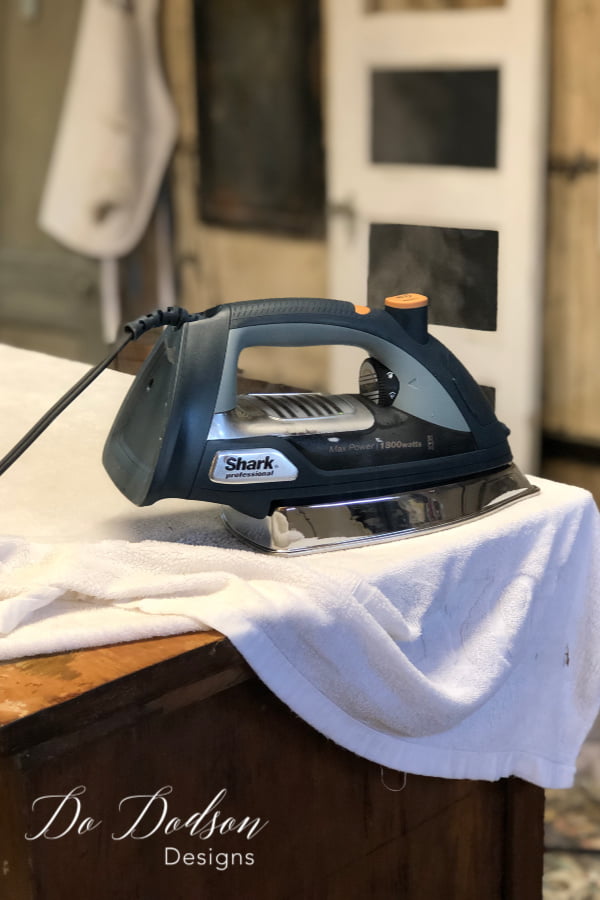
Method #4 The Last Resort
Don’t do this! I know it’s tempting to try and sand the veneer off, but I promise you it won’t be pretty the next day when you feel like your arms are falling off. How do I know? Because I’ll try anything once.
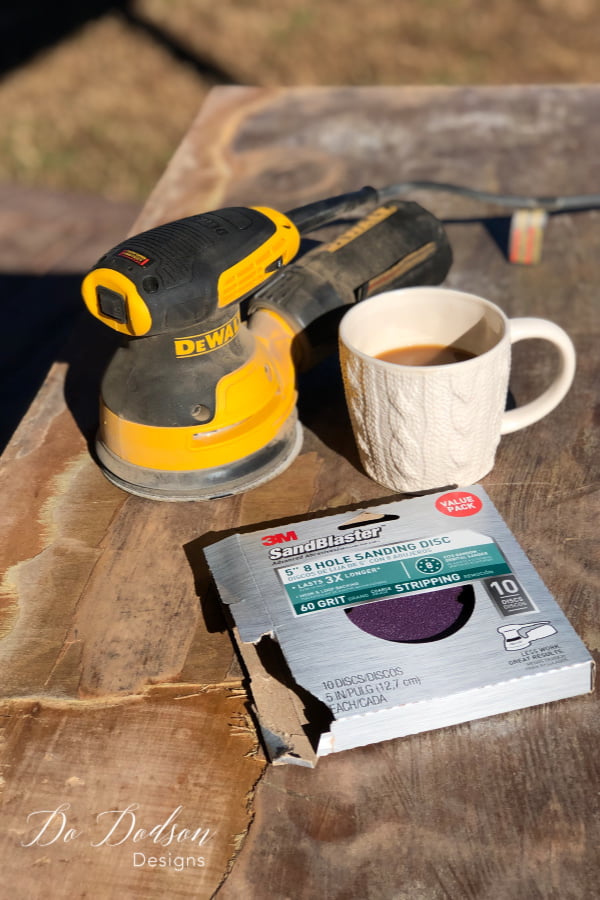
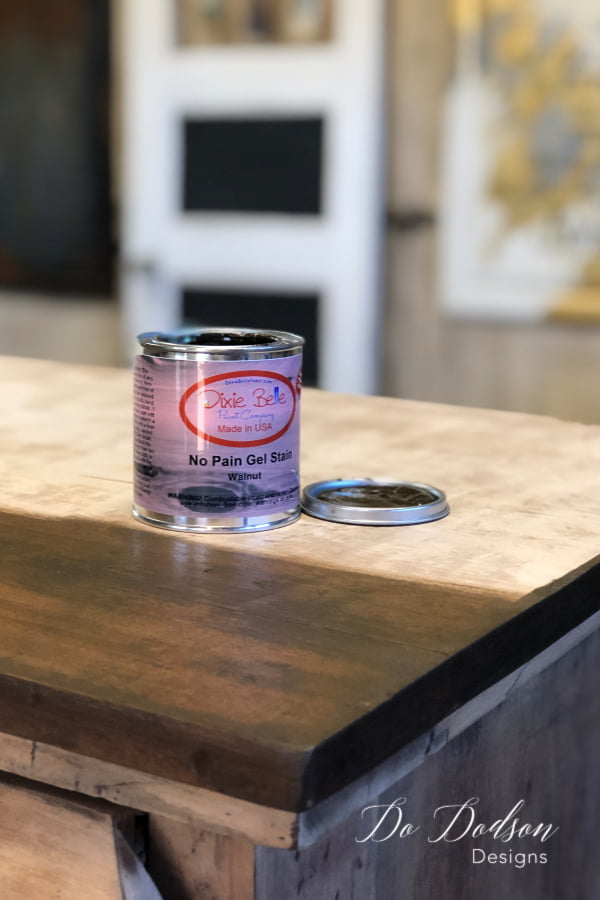
Thanks for joining me today, and I hope one of these 4 veneer removal methods helps to resolve your wood veneer issue.
Got a question, or have a comment about this post? Leave me a comment below and I’ll answer them. I’d love to help you!
Until the next project… xo, Do
Painting or Refinishing After Removing Veneer
Once the veneer has been removed, use a good quality sander to smooth out any leftover glue that may have been left behind on the surface. Most of the time, it is impossible not to have some wood damage from some of the more aggressive veneer removal methods. But if that happens, paint is always a great choice. Hopefully, you’ll have great success with minimal damage, and you’ll be able to stain the wood and add beauty once again.

Thanks for joining me today, and I hope one of these 4 veneer removal methods helps to resolve your wood veneer issue.
Got a question, or have a comment about this post? Leave me a comment below and I’ll answer them. I’d love to help you!
Until the next project… xo, Do


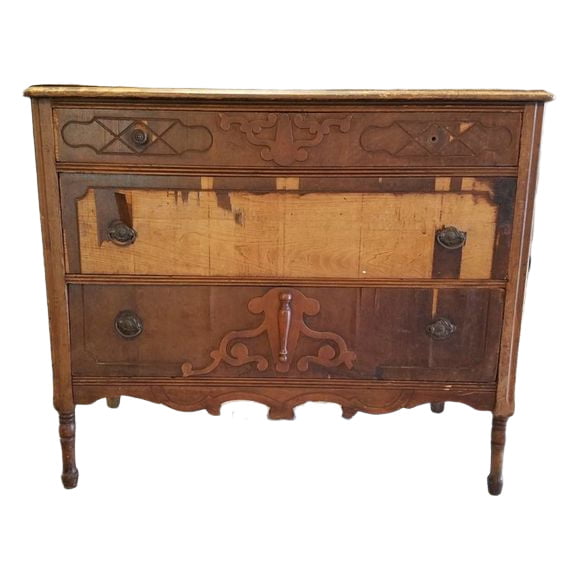
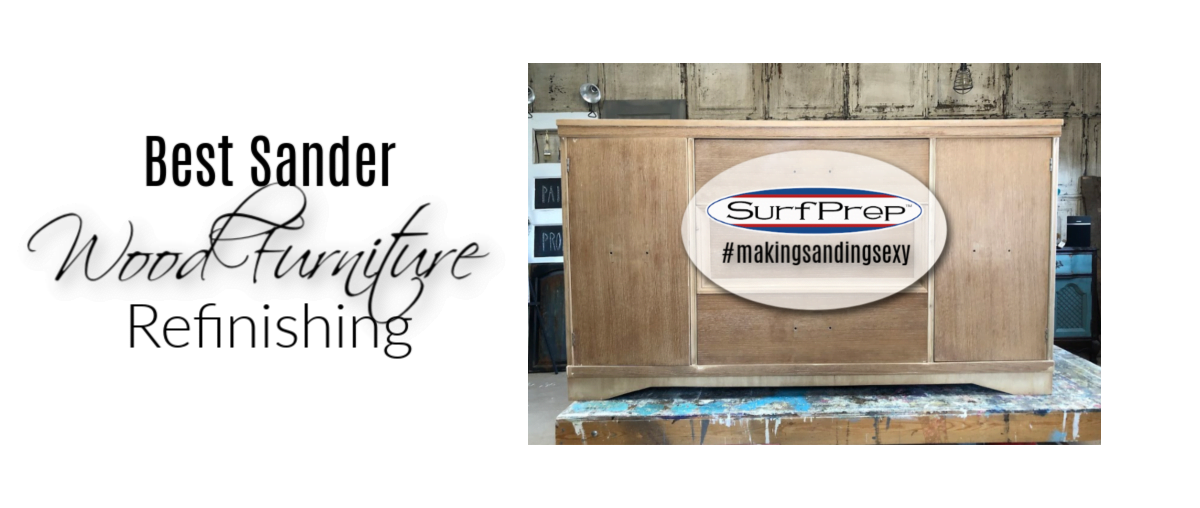
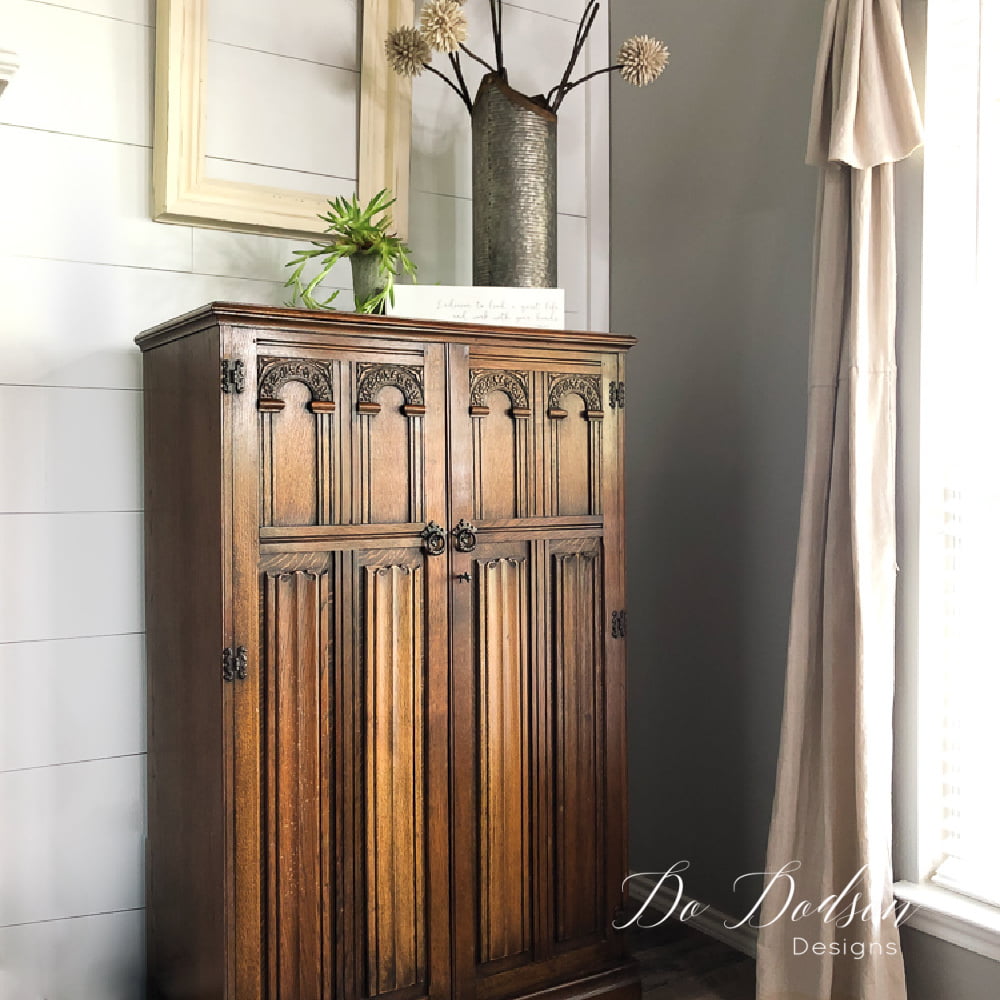

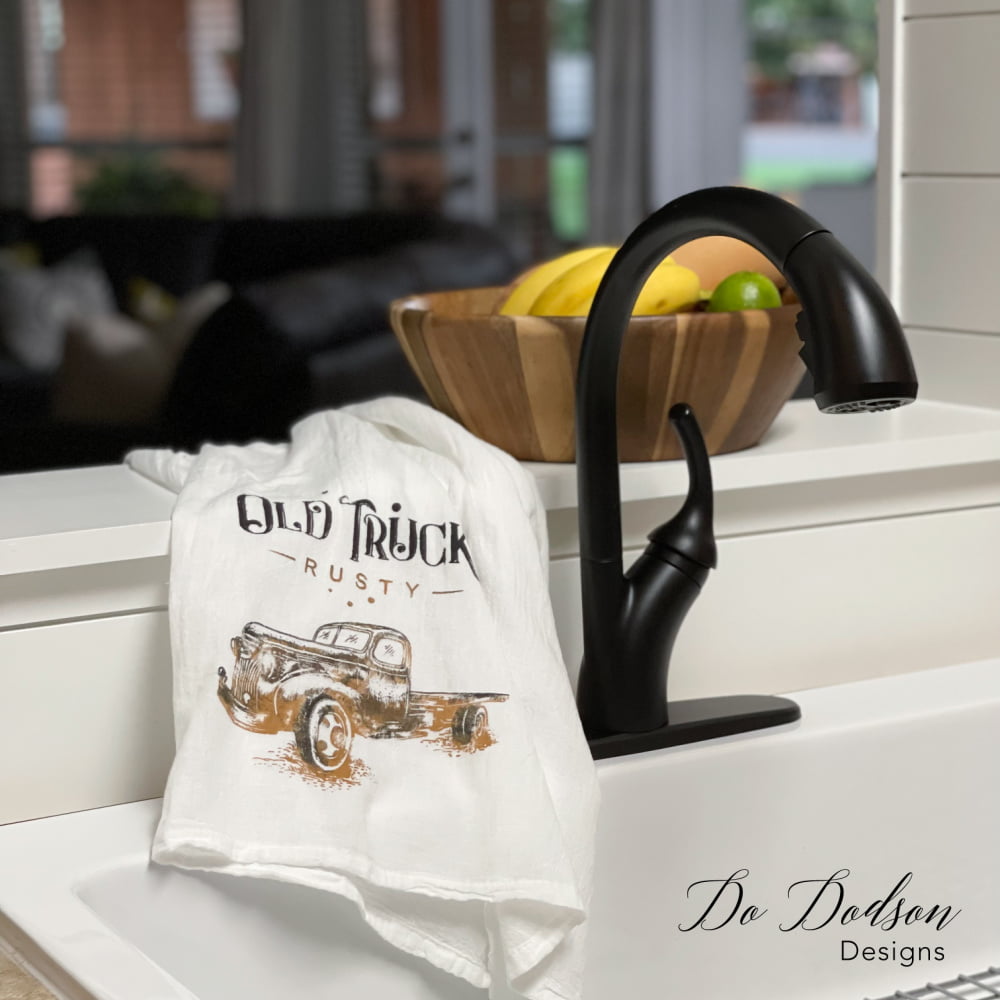
Hi, I am thinking of trying the raw wood look for a vanity I just picked up with peeling veneer. I noticed in one case you used Modern Masters Clear Coat Satin and in another case used Dixie Bell Gator Hide. Which did you like the best for the raw wood after removing veneer? Thanks!
Hey Jill!
That depends on the look you’re wanting. Each one has a different sheen. Gator Hide is water repellent and gives a satin finish look. So for a top that gets high traffic, this would be my choice on raw wood. Plus it’s water base. 🙂
xo, Do
Hi, I have an old claw foot kitchen table my mom got from estate sale. Veneer on top all cut n peeling. Upon removing the veneer i noticed on original wood it has little holes seems as if whonever b4 me, that they put some type of wood glue etc but it is powdery and didnt do the trick and maybe why the veneer cane into play. I dont know how to continue. My 1st veneer piecr. Any advice would be greatly appreciated. I have pics if you need. I am a fan of your site btw.
All my best Tricia
Hi Tricia! Thanks for reaching out to me. I guess it depends on how you want to refinish the top. After removing the veneer, always sand it back to the raw wood. If you are painting it, you can use a wood filler to repair any holes before painting. If the wood underneath is in good condition you can proceed with stain and a top coat. Be patient with yourself if this is your first time. Removing veneer is tricky but it just might amaze you what beauty lies beneath.
xo, Do
Hi! Love your posts! I have a cabinet I am upcycling to use as bathroom linen storage. I already redid a sink vanity in raw wood. The cabinet has a few places where veneer is damaged/missing. I’m afraid if I remove veneer, wood may be ugly? If it is, paint? I’m afraid to mess this piece up, as it took me forever to find something that will work in the small space. And I’m torn between another raw piece and paint…..if paint, have to fix veneer? Sorry for the ramble!!
Becky,
Your project sounds lovely! The truth is that you just don’t know what the wood looks like under the veneer. Good news is… you can always paint the wood if it’s not what you want. This has happened to me a few times, but the risk of removing is so worth it when it’s beautiful Hope this helps. I would love if you would share the finished project. I love a good makeover!
xo, Do 🙂
How do you tell if a piece is veneer or not? I have a set of old dressers that look to be a painted wood finish, which leads me to think it is veneer, but there is no peeling that I can see. Just worn down spots where you can see the wood underneath. Thanks so much!
Hi Lindsay,
It’s common on particleboard and plywood furniture. But it was also used on a lot of antiques that have perfectly good wood underneath. If there is a veneer, you will be able to look at it from the side and see where the sheet of veneer attaches to the front of the piece. Also, if you see unfinished wood underneath the furniture, it’s probably wood and not laminate which tends to cover the furniture from top to bottom. Hope this helps.
Do 🙂
I have an Ethan Allen bedroom set I purchased to paint and flip. However I come to find out it has veneer on top. The veneer is not lining up in some places because the particle board underneath has swelled. So I indeed need to remove the veneer … but can you tell me how I would go about putting NEW wood on top of the particle board? I know I can’t sand and paint particle board but I’m super new to this and want to add new wood
Hmmm, you may be better off repairing the holes and damaged areas with a filler instead and painting. It’s possible to use a liquid nail to secure them. I would do a search on google and Pinterest to see if anyone else has suggestions on how to proceed. Furniture repair is tricky and I’d love to say “one fix for all” but that doesn’t work because every piece is different. Some of the same rules apply but it’s very individual. I hope this helps. Good luck with your project. 🙂 xo, Do
I have an old vanity that has severe veneeer damage Unfortunately after using the wet towel method the wood beneath the veneer warped. What to do? Help!
Oh, bummer, Teresa. I guess that depends on how warped it is. I would try setting it in the sun. A lot of times, once it dries out, it will regain its shape. I hope this helps. 🙂
Hi, I’m in the process of removing veneer from a chest I decided to tackle, but what about the wood work around the mirror, how can I tackle that part? I’m planning on using Annie Sloan chalk paint on this piece. Thanks!
Hi Harriette, Can you email me at [email protected] and send a picture? I have no way of knowing without seeing what you are working on. I’m happy to help. 🙂
Thank you SO MUCH Do, for the instructions on removing vaneer! I’ve come into several furniture pieces with such issues and were afraid to remove too much, not knowing what the wood looked underneath. I’ve got a dining room table where slits in the vaneer are on the table top. I don’t want to remove the vaneer as the table has extensions, and seems like too much work to then turn around and sell it. The wet towel and iron method has been suggested, but I don’t want to remove the vaneer; I just want to soften the vaneer, add glue and repair it. Should I leave the wet towel on overnight? Or just a couple of hours?
Hi Diana,
The wet towel method will break down the glue and cause the old veneer to warp. If you’re just wanting to repair the venner, you can always use wood glue to secure it back down. I use a syringe and inject wood glue where the veneer is lifting. But, if the lifting is severe, your best bet is to remove it. I hope this helps. 🙂
Hi Donna! These are great tips. I haven’t had to remove veneer yet but I’m keeping this just in case. Thank you for sharing.
Hey Cheryl! I’m sure you will come across it at some point. Too many pieces out there that need to be rescued. 🙂 xo
hi, i would love some advice if you see this. i bought a home with old ulgy orange veneer cabniets. some of the cabniets have the veneer peeling and broken off pieces. rest are in solid condition. i want to paint then but i wonder if i should remove all veneer from all cabniets will be a ton of work or if i should glue down peeling pieces and use a filler for pieces that already were broken off? then just sand everything good before painting. would love your thoughts and opinions
Hi Bobbi,
Here is my two cents on this subject. If you can repair the veneer, that would be your best bet. If you remove some of the veneer and not all, after you paint, there will be a noticed able difference. Yes, it would be a lot of work and it depends on much time and effort you are willing to invest. I hope this helps and best of luck with your cabinets. 🙂
Hello – looking for tips on removing highly damaged veneer that has been chalked painted ( also poorly done) ! What steps do you recommend?
Happy New Year!
Hi Andrea,
Oh my goodness that sounds like a lot of work. But, I find that those pieces usually turn out better than expected. You can try the methods listed in this post to remove the veneer but if that doesn’t work, you may have to remove the chalk paint and or wax finish first. I wished I could tell you there was an easier way. Just get in there and start doing it. Best of luck on your project. 🙂 xo